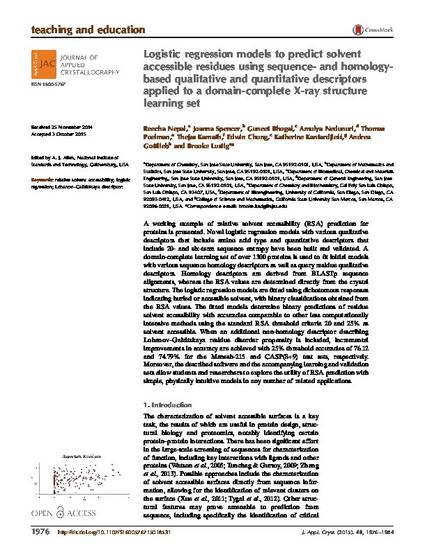
- relative solvent accessibility,
- logistic regression,
- Lobanov–Galzitskaya descriptor
A working example of relative solvent accessibility (RSA) prediction for proteins is presented. Novel logistic regression models with various qualitative descriptors that include amino acid type and quantitative descriptors that include 20- and six-term sequence entropy have been built and validated. A domain-complete learning set of over 1300 proteins is used to fit initial models with various sequence homology descriptors as well as query residue qualitative descriptors. Homology descriptors are derived from BLASTp sequence alignments, whereas the RSA values are determined directly from the crystal structure. The logistic regression models are fitted using dichotomous responses indicating buried or accessible solvent, with binary classifications obtained from the RSA values. The fitted models determine binary predictions of residue solvent accessibility with accuracies comparable to other less computationally intensive methods using the standard RSA threshold criteria 20 and 25% as solvent accessible. When an additional non-homology descriptor describing Lobanov–Galzitskaya residue disorder propensity is included, incremental improvements in accuracy are achieved with 25% threshold accuracies of 76.12 and 74.45% for the Manesh-215 and CASP(8+9) test sets, respectively. Moreover, the described software and the accompanying learning and validation sets allow students and researchers to explore the utility of RSA prediction with simple, physically intuitive models in any number of related applications.
Available at: http://works.bepress.com/brooke_lustig/21/

This article was published in the Journal of Applied Crystallography, volume 48, issue 6, 2015. It is also available at this link.
This work is licensed under a Creative Commons Attribution 4.0 License.